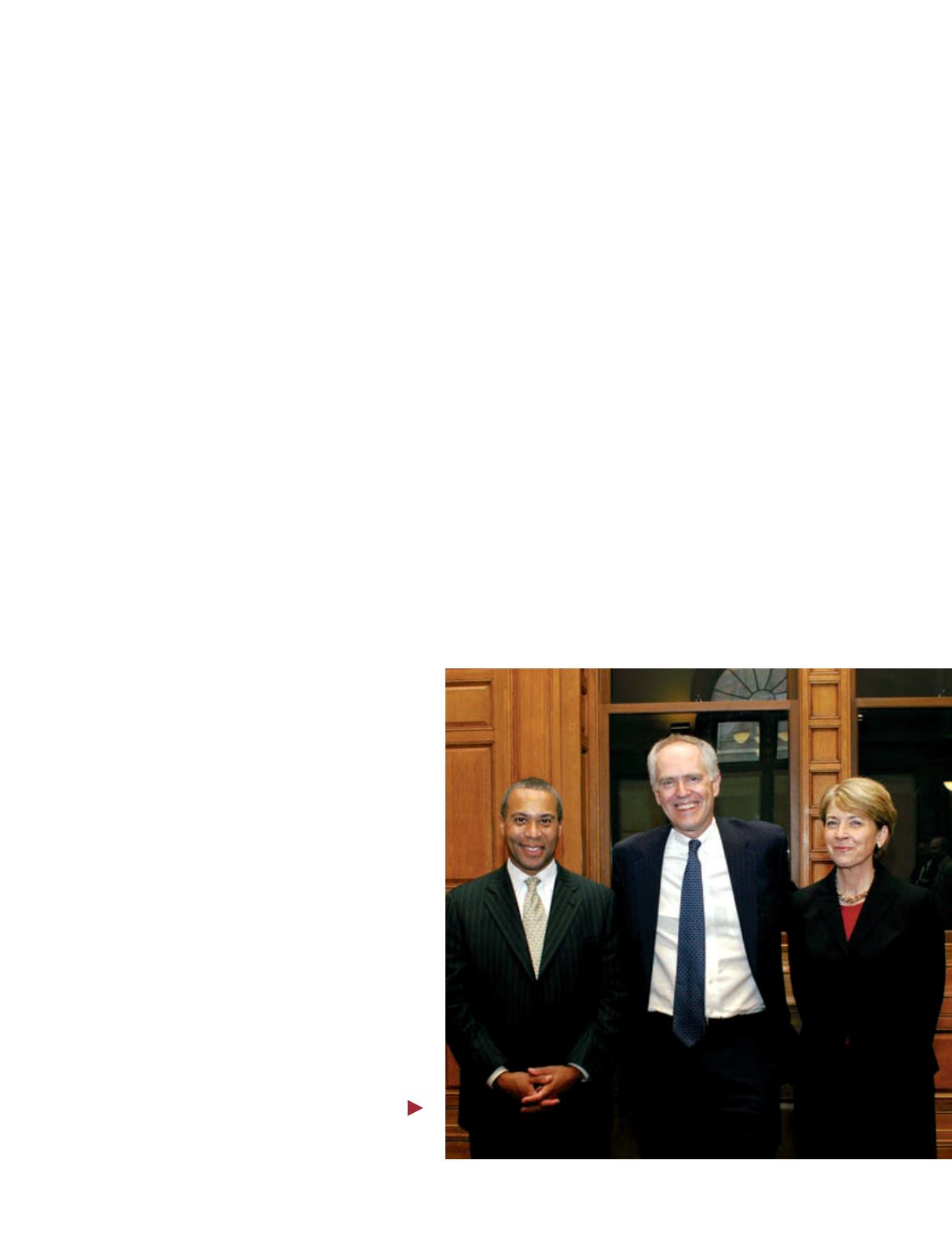
21
reform appeared to be on the horizon. But in 2003, the
EPA, now under the Bush administration, denied the
request, stating that it lacked authority to police green-
house gases because they weren’t “air pollutants” as
defined by the statute, citing the “scientific uncertainty”
of CO2 emissions’ effect on climate change as the basis
of its decision.
Enter Jim Milkey ’74
Around the same time as political tides shifted away
from climate reform in America, Jim Milkey was in
Denmark, taking a year off from the state Attorney
General’s Office to spend time with his wife, Cathie Jo
Martin, then a visiting professor at the University of
Copenhagen. Ironically, it was here – with an ocean and
nearly 4,000 miles separating him and Washington, D.C.
– that the nucleus of
Massachusetts v. EPA
materialized.
“[The trip to Denmark] gave me time to think; it gave
me a
way
to think,” Milkey recalled in a 2010 interview
with
Yale Climate Connections
. “In Europe, at the time,
global warming was not only the number one environ-
mental issue, it was really the only issue that people
wanted to talk about, the only environmental issue. And
it was on the radar screen there in a way that it just wasn’t
back in 2000 in America.”
The disparity was alarming. Milkey said in a recent
interview that he thought, “Oh my God, this is a big
problem. Why aren’t we doing anything about it?”
Ruminating on what he personally could do in his
position at the state Attorney General’s Office, an idea
began to crystallize.
“It became very obvious...that if anything was going
to happen in this sphere, it wasn’t going to be a result
of the federal government,” he says. So, in July 2001,
back on American soil, Milkey started building his case
with a single question: Could something be done on the
state level to force federal action on climate reform?
The concept had a particular resonance with Massa-
chusetts, where rising sea levels put the state’s nearly
200 miles of coastline at risk. In other words, the air
pollution from greenhouse gases and carbon dioxide
posed an undeniable threat to the Bay State. Remember
Section 202? It requires the EPA to set emission standards
for “any air pollutant...which in his judgment cause[s],
or contribute[s] to, air pollution which may reasonably
be anticipated to endanger public health or welfare.”
By refusing to regulate carbon dioxide and other green-
house gases, Milkey posited, the EPA was violating one
of the major tenets of the Clean Air Act.
Overcoming Obstacles
Formulating the legal argument was just the initial
hurdle in a series of many for Milkey, the first of which
was getting his boss, Massachusetts Attorney General
Thomas F. Reilly, to take the case. Milkey employed a
tactic that’s now proliferating among environmental
scientists and campaigners trying to communicate their
message to voters and make climate reform a political
priority – he made it personal.
“Tom Reilly believed strongly in protecting children,”
Milkey says. “We accurately sold the case to him as
coming down to one fundamental question: ‘What kind
of world do we want to leave to our children and grand-
children?’” Phrased that way, it didn’t take much more
convincing to get Reilly on board.
A recent Yale/Gallup/Clearvision poll found that,
while a large majority of Americans were personally
convinced that global warming is happening (71%),
they were evenly split on their level of worry about
global warming, with half personally worried either
a great deal (15%) or a fair amount (35%) and the
other half worried only a little (28%) or not at all (22%).
According to the study, these levels of personal worry
were due in part to the fact that many Americans
believe global warming is a serious threat to other
species, people, and places far away, but not so serious
of a threat to themselves, their own families, or local
communities.
Milkey (c.), seen at his 2009 Massachusetts Appeals
Court swearing-in ceremony, stands with former
Mass. Governor Deval Patrick and former Mass.
Attorney General Martha Coakley.


